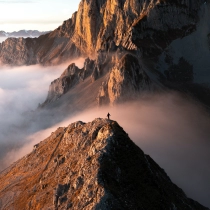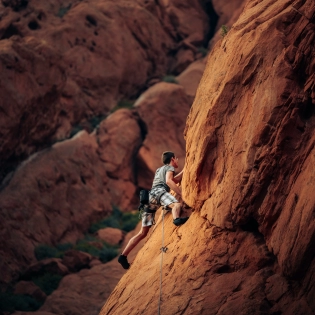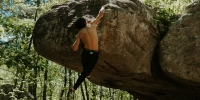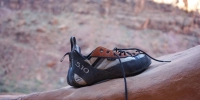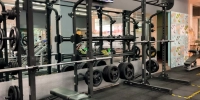Optimize Your Climb: Specific Warm-Up Routines For Climbers

Just as an athlete wouldn't jump straight into a marathon, a climber shouldn't immediately pull onto a demanding route without proper preparation. A well-executed warm-up routine is not merely a suggestion; it's a fundamental pillar of injury prevention, performance enhancement, and mental readiness in climbing. Whether you're hitting the bouldering gym, clipping bolts on a sport route, or placing gear on a traditional climb, a tailored warm-up can significantly impact your session's efficiency, enjoyment, and safety.
- The Science Behind The Warm-Up: Why It Matters
- Key Components Of An Effective Climbing Warm-Up
- Phase 1: General Aerobic Exercise (5 Minutes)
- Phase 2: Dynamic Stretching And Mobility (5-10 Minutes)
- Phase 3: Climbing-Specific Warm-Up (10-15 Minutes)
- Tailoring Your Warm-Up: Style-Specific Considerations
- Special Considerations: Optimizing For Your Goals
- Common Warm-Up Mistakes To Avoid
- Mental Preparation: Getting In The Zone
- Cool-Down: The Post-Climb Recharge
- Conclusion
- Frequently Asked Questions
The Science Behind the Warm-Up: Why It Matters
A proper warm-up primes your body and mind for the unique demands of climbing.
Injury Prevention
Warming up increases blood flow to your muscles, making them more elastic and less prone to strains, sprains, and tears. It also lubricates your joints, improving their range of motion and reducing friction. This is crucial for repetitive and high-intensity movements common in climbing.
Enhanced Performance
With warmed muscles, you'll experience improved power, endurance, and coordination. Your nervous system becomes more alert, leading to faster reaction times and better movement precision. This translates directly to feeling stronger, more fluid, and capable on the wall.
Mental Readiness
Beyond the physical, a warm-up serves as a crucial transition into "climbing mode." It helps you focus, visualize your movements, and mentally prepare for the challenges ahead, allowing you to approach your session with intention and confidence.
Key Components of an Effective Climbing Warm-Up
A comprehensive warm-up routine typically includes several phases, each building upon the last.
Phase 1: General Aerobic Exercise (5 minutes)
Start with light cardio to gently elevate your heart rate and increase blood flow throughout your body.
-
Light jogging in place, jumping jacks, or cycling.
-
Arm circles, leg swings (forward/backward, side-to-side).
Phase 2: Dynamic Stretching and Mobility (5-10 minutes)
Focus on movements that take your joints through their full range of motion, mimicking climbing movements without static holds.
-
Shoulders and Chest: Arm circles, shoulder rolls, open book stretches.
-
Wrists and Forearms: Wrist rotations, finger flexions and extensions, gentle forearm stretches.
-
Hips and Legs: Leg swings, hip circles, gentle lunges with twists.
-
Spine: Torso twists, cat-cow stretches.
Phase 3: Climbing-Specific Warm-Up (10-15 minutes)
Gradually introduce climbing movements on easy terrain.
-
Easy Traversing: Move horizontally on low-grade walls.
-
Simple Problems/Routes: Start with V0-V1 boulder problems or 5.6-5.8 routes, focusing on smooth, controlled movements and precise footwork, not sending.
-
Gradual Intensity Increase: Slowly progress to slightly harder climbs as your body feels more ready, but avoid pushing to your limit during this phase.
Tailoring Your Warm-Up: Style-Specific Considerations
Different climbing disciplines demand slightly different warm-up emphases.
Bouldering Warm-Up
Given its focus on short, intense, powerful movements, a bouldering warm-up emphasizes explosive dynamic stretches and finger-specific readiness.
-
More dynamic arm swings and plyometric movements.
-
Light hangs on an easy jug or warm-up bar to prepare fingers (after general warm-up).
-
Focus on quick, precise movements on the first few easy problems.
Sport Climbing Warm-Up
Sport climbing often requires sustained effort and endurance.
-
A more balanced warm-up that includes aerobic exercise for endurance.
-
Emphasis on core and lower body mobility for efficient rest positions and high feet.
-
Gradual progression up longer, easier routes, focusing on linking moves fluidly.
Trad Climbing Warm-Up
Traditional climbing combines endurance with sustained focus and often awkward body positions.
-
Prioritize full-body flexibility and joint mobility to prepare for varied body positions and sustained effort.
-
Focus on hip and shoulder mobility for efficient gear placement and resting.
-
Mental preparation is particularly critical for managing risk and route finding.
Special Considerations: Optimizing for Your Goals
Beyond general routines, tailor your warm-up to your session's specific aims.
-
Working a Project: If you're attempting a specific hard project, dedicate extra warm-up time to movements and holds similar to those on your project, but at a lower intensity.
-
Finger-Heavy Day: For sessions focusing on finger strength or hangboarding, ensure your fingers and forearms are thoroughly warmed with gentle hangs on jugs or open hand positions after your general warm-up.
-
Dynamic Moves: If your session involves many dynos or powerful movements, incorporate more explosive drills like jumping lunges or clap push-ups into your dynamic warm-up phase.
Common Warm-Up Mistakes to Avoid
To get the most out of your warm-up and prevent injury, be mindful of these pitfalls.
-
Static Stretching Too Early: Avoid prolonged static stretches before your muscles are warmed up, as this can temporarily decrease power and potentially increase injury risk. Save static stretching for your cool-down.
-
Not Warming Up Enough: Jumping straight onto hard climbs without adequate preparation is a direct path to injury. Listen to your body; you should feel warm, mobile, and ready, not cold and stiff.
-
Over-Warming Up: Spending too long in your warm-up can lead to fatigue before your actual climbing session begins. Aim for optimal readiness, not exhaustion.
-
Skipping the Mental Prep: Forgetting to mentally engage can leave you feeling unfocused and less confident, even if your body is physically ready.
Mental Preparation: Getting in the Zone
The mind is arguably your most important climbing muscle.
Focus and Visualization
Take a few moments to quiet your mind. Visualize your first few climbs or a challenging sequence on your project. See yourself moving smoothly and successfully. This mental rehearsal can significantly improve your performance and confidence.
Goal Setting for the Session
Have clear, realistic goals for your climbing session. This could be trying a specific move, working on a particular technique, or simply enjoying the movement. Clear intentions help direct your warm-up and overall focus.
Breathing and Mindfulness
Use deep, controlled breathing to calm your nervous system and bring your attention to the present moment. This helps to alleviate pre-climb jitters and allows you to be fully engaged with your body and the rock. By overcoming these mental hurdles, you ensure your mind is as prepared as your body for a productive session.
Cool-Down: The Post-Climb Recharge
While warm-ups get you ready, a proper cool-down aids recovery and flexibility.
Light Aerobic Activity (5 minutes)
After climbing, a few minutes of light activity, like walking, helps gradually bring your heart rate down and remove metabolic waste from your muscles.
Static Stretching (10-15 minutes)
This is the time for static stretches, holding each stretch for 20-30 seconds. Focus on major muscle groups used in climbing: forearms, shoulders, chest, back, hamstrings, and hips. Stretching when muscles are warm helps improve flexibility and reduce post-climb soreness.
Foam Rolling or Massage
Consider using a foam roller on tight muscles or incorporating self-massage to further aid in recovery and release tension.
Conclusion
A specific and thoughtful warm-up routine is an indispensable part of any climber's regimen. It’s an investment in your body, your performance, and your long-term climbing health. By understanding the phases of a warm-up, tailoring it to your climbing style, and avoiding common mistakes, you can significantly enhance your climbing experience, prevent injuries, and unlock your full potential on the rock or in the gym. Remember, preparation is not just about getting strong; it's about getting smart.
Frequently Asked Questions
Why is warming up before climbing so important?
Warming up before climbing is crucial as it increases blood flow, improves muscle elasticity and flexibility, enhances range of motion, and mentally prepares you. This routine helps prevent injuries like strains and sprains while setting the stage for a more efficient and successful climbing session.
What are the key components of an effective climbing warm-up?
An effective climbing warm-up includes light aerobic exercise (like jogging), dynamic stretching (e.g., arm circles), targeted mobility exercises (like wrist rotations), and a gradual progression to easier climbs. These phases collectively prepare your body and mind for the demands of climbing.
How long should a climbing warm-up last?
A climbing warm-up typically lasts 20-30 minutes, structured into phases: 5 minutes of light cardio, 5-10 minutes of mobility/dynamic stretches, and 10-15 minutes of climbing-specific activities on easy routes, gradually increasing intensity. Adjust based on how your body feels.
Do warm-up routines differ for bouldering, sport climbing, and trad climbing?
Yes, warm-ups should be tailored. Bouldering warm-ups emphasize dynamic and finger-specific exercises for powerful moves. Sport climbing needs balanced routines for endurance. Trad climbing benefits from flexibility and joint mobility for sustained effort and awkward positions.
How does mental preparation fit into a climbing warm-up?
Mental preparation is vital. It involves focusing your mind on the climb, visualizing sequences, and getting into the "climbing zone" through techniques like reflection, visualization of successful movements, setting clear goals, and using relaxation techniques to stay centered and calm.
